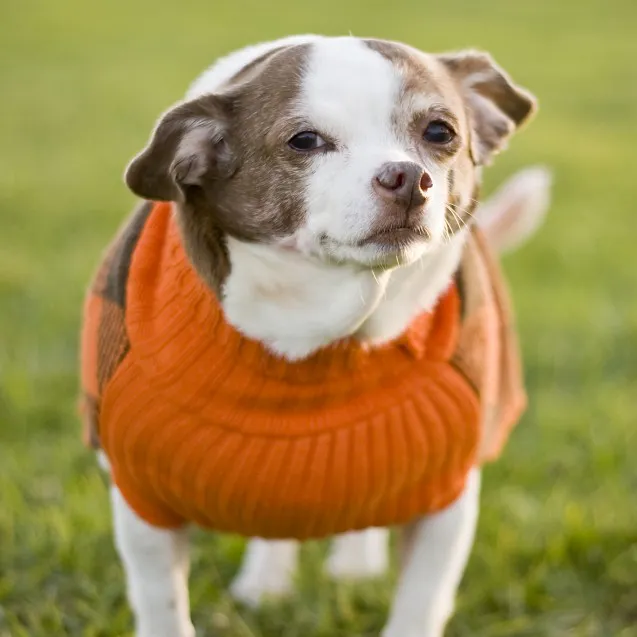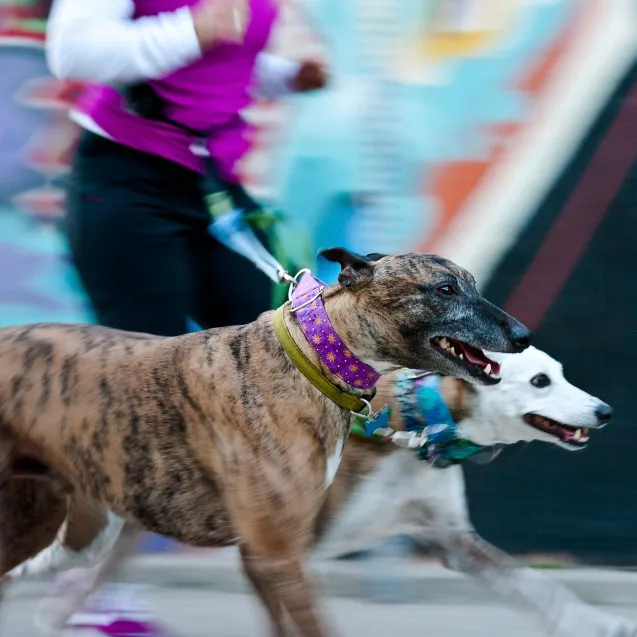1
The Big Picture of Dog Photography
In This Chapter
Understanding the goals and challenges of dog photography
Using your skills to excel at dog photography
Seeing how different approaches yield different results
People are showing a growing interest in pet photography of all kinds, especially dog photography (exhibit A: you’re reading this book). At the hobbyist as well as professional level, dog photographers are popping up all over. This interest makes perfect sense — we share our lives with our wonderful dogs, but the time we spend together is simply much too short. Those of us who love dogs seem to be on a quest to immortalize our canine friends, to somehow hang on to these moments we share together forever. That’s where dog photography comes in.
In this chapter, we reveal how snapping pictures of your (or someone else’s) dog can change your life, and perhaps even the dog’s life. But before you grab your camera, you should know something about the skills that can make you successful, so we also cover those. And just as your dog has his favorite tricks, you’ll come to have your favorite ways to take photos of your pup. We outline your options at the end of the chapter.
The Scope of Dog Photography
People have different motivations for wanting great photos of their dogs, so your first task is to figure out what that motivation is so you can take the right photo, whether for yourself or someone else. Do you want to capture images of Hercules playing his favorite game? Maybe you want just one nice photo of Hogan you can use for your holiday cards this year. Or perhaps Quimby’s starting to slow down a little and you want to make sure you have photos of him as you two go about your shared daily routine that you’ll one day miss.
Whatever the motivation is, the goal of dog photography is pretty basic: catch those real moments of a beloved dog’s life. The scope of what it takes to achieve that goal is, admittedly, a hearty challenge. You have to understand how dogs think and behave, be willing to get down and dirty with them, be just as clever with the dog’s humans, and employ every drop of patience, flexibility, and tranquility you have. Just like Jesse’s obedience lessons, dog photography takes hard work and practice, but in the end, there’s nothing but tail wags all around.
Capturing moments and stories that are fleeting
The true goal of dog photography (as with any other photography) is to freeze time — to capture those precious moments in a dog’s life for all eternity. When you reflect upon your dog and the relationship you share with her, what stands out? What do you always want to remember about her? When you want to show the “real” Millie in photographs, forgo the commands. Much of dog photography is just about being quick with a shutter button. In Figure 1-1, we caught an unplanned moment in which Henry decided it was time to play tug with his leash, perfectly capturing this little joker’s personality.
One of the unique aspects about photographing dogs is that you can’t really tell them exactly how to pose, and while that can be an obstacle, you also end up capturing some seriously genuine moments. Dogs can’t really fake it; what you see is what you get. Sure, you can tell Jackie Brown to “sit,” but you can’t instruct him to “back up 3 yards and then come running toward me with a happy grin on your face.” If you want that to happen, you have to follow Jackie around with a camera until he spontaneously does what you’re looking for. Of course, there are a ton of tips, tricks, and strategies to encourage your fuzzy pal to do something cute or fun (and we tell you all about those in this book), but being quick on the draw results in your being able to freeze in time some very real-life moments.
Understanding how dogs are like children to their humans
Obviously, you know what your own dog means to you, so remember that feeling when you photograph other people’s dogs. Always respect the humans’ directions (as long as the dog isn’t in danger) and defer to them. You wouldn’t tell others how to parent their human children, nor should you do so with canine kids.
50mm, 1/160 sec., f/11, 125
Figure 1-1: Keep an eye out for unplanned moments like this.
The heart of the matter really is a matter of the heart. People love their dogs, just like you love yours. And that’s probably why they’re letting you take photos of them in the first place. Most times, you fall just as in love with them as their humans have, but sometimes, a dog may try your every last nerve. Just remember: That dog is someone’s child. No matter how Max tests you, don’t get angry and don’t give up. Take a break if you must, but always strive to see Max through loving eyes, just as if he were your own dog (or child). And create images that truly bring out the parent-child bond that many humans share with their dogs.
Keeping your canine subject at ease
Dogs are energy experts. They can read it, they can give it off, and they can detect the most subtle changes in it. Energy is one of their main languages, which means that if you’re stressed, dogs sense it. If you’re calm, they know it. More than that, they mirror your energy.
When you’re photographing dogs, get yourself into a peaceful state of mind and stay there until you’re done. If you get all crazy and hyper (or even demanding and angry), you can expect the dog to do the same. Ever notice how those TV shows about improving pet behavior start with a clip of humans demonstrating a dog’s horrible behavior as they yell at the dog in vain, but then the expert steps in, and suddenly, the dog is heeling, sitting, and ignoring the cat? It’s not magic; it’s energy. And to be successful with your dog photography, yours has to be good.
Different dogs respond differently, of course, so it’s up to you to meet the dog where the dog is. In other words, a big Lab mix may not mind you bending down to give him a big greeting and a solid pat on the back, whereas a small Chihuahua probably doesn’t feel comfortable with someone hovering over her. Your canine subjects need a lot of space, especially at the beginning. Remember that being the star of a photo shoot is probably a brand-new experience for them, so to keep them comfortable and calm while photographing, give them plenty of mental and physical space.
More important, keep the process fun! The more you can turn it into a game, the better your results will be.
Using dog photography in rescue work
Shelt...













